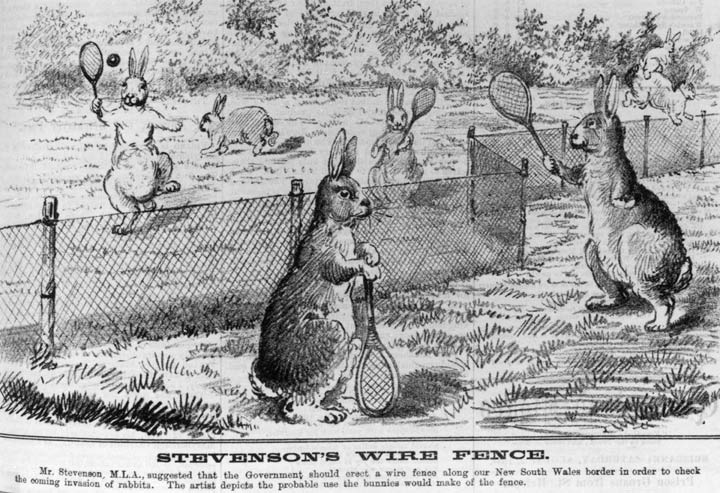 Rabbit fence cartoon, 1884
Rabbit fence cartoon, 1884
TLF ID R9214
This black-and-white cartoon satirises Queensland parliamentarian John Stevenson's suggestion that a fence be built on the New South Wales border to stop an expected invasion of rabbits. It depicts a low wire fence that four rabbits are using as a tennis net. Other rabbits leap over the fence and hop in the background. Lush grass and bushes can be seen. The caption says that the cartoon 'depicts the probable use the bunnies would make of the fence'. The cartoon appeared on the front cover of Queensland Figaro and Punch on 2 August 1884.
